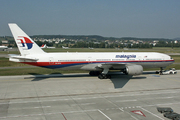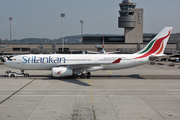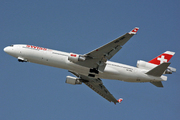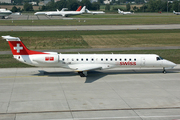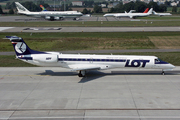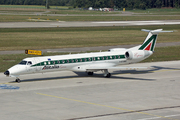Dépêches
USAPA Champions Introduction of House Bill on Aviation Safety
Dépèche transmise le 30 juillet 2009 par Business Wire

USAPA Champions Introduction of House Bill on Aviation Safety
CHARLOTTE, N.C.--(BUSINESS WIRE)--The House Subcommittee on Aviation, chaired by Congressman Jerry F. Costello, introduced a bill yesterday afternoon, the Airline Safety and Pilot Training Improvement Act of 2009, to improve safety and training practices for the airline industry. The legislation was drafted following recommendations made at several meetings, including a roundtable discussion with the leadership of the nation’s nearly 90,000 frontline union pilots that took place on July 15.
At that meeting, US Airways Flight 1549 Captain Chesley “Sully” Sullenberger and First Officer Jeffrey Skiles, along with the president and government affairs chairman of the US Airline Pilots Association (USAPA) and representatives from the Coalition of Airline Pilots Associations (CAPA); the Allied Pilots Association (APA), representing the American Airlines pilots; the International Brotherhood of Teamsters; and the Air Line Pilots Association (ALPA), discussed with the Aviation Subcommittee very serious issues in pilot safety highlighted by recent aviation accidents, including the US Airways Flight 1549 ditching in the Hudson River and the Continental Connection Flight 3407 in Buffalo, N.Y.
“USAPA has received a copy of the proposed bill, and our appropriate Safety and Training committees will review it in its entirety,” said Captain Mike Cleary, president of the US Airline Pilots Association. “We are pleased that the House Aviation Subcommittee is taking an active role in demanding that America’s airliners have qualified pilots at the controls, pilots who are properly licensed to do the job and possess, at a minimum, an Airline Transport Pilot (ATP) license. Although I cannot speak for all, I imagine that the 90,000 pilots who were represented at the subcommittee roundtable are acutely aware of the demands the industry places on them and the need for experience in our cockpits.”
Currently, pilots can be hired on a flight deck with an FAA Commercial license, which requires 190 flight hours in an approved school or 250 hours from an unapproved school. Conversely, an ATP license will require significantly more aeronautical knowledge and 1,500 hours of flight experience. With regional airlines flying sophisticated aircraft in our nation’s busiest airports, pilot leadership was unanimous in its belief that an ATP license should be a minimum requirement for both pilots.
“The frontline pilots in our nation’s airliners deeply appreciate Chairman Costello’s sincere commitment to passenger safety and a safe air transportation system; this is a big first step in achieving an airline safety bill that will make a difference,” said Captain Arnie Gentile, chairman of USAPA’s Government Affairs Committee, who was party to the subcommittee roundtable discussions. “Those who would oppose such legislation for self-serving and/or desperate needs to achieve a ‘race to the bottom’ cost structure do so while putting the American flying public at risk.”
“Professional pilots who actually fly with the passengers are ultimately responsible for the safety of the flight, and it is glaringly obvious that it is in the pilot’s very best interest to keep our air transportation system safe,” Captain Gentile continued.
Some of the other key issues addressed by the aviation experts and incorporated into the bill include:
- Requiring the Secretary of Transportation to provide an annual report to Congress on what the agency is doing to address each open NTSB recommendation pertaining to part 121 air carriers.
- Establishing comprehensive pre-employment screening of prospective pilots, including an assessment of a pilot’s skills, aptitudes, airmanship and suitability for functioning in the airline’s operational environment.
- Creating a pilot records database within 90 days to provide airlines with fast, electronic access to a pilot’s comprehensive record.
- Directing the FAA to update and implement a new pilot flight and duty time rule and fatigue risk management plans within one year to more adequately track scientific research in the field of fatigue. Current FAA rules permit 16 hour workdays for pilots.
- Directing the FAA to develop and implement a plan to establish an Aviation Safety Action Program (ASAP), a self-reporting safety system, and a Flight Operational Quality Assurance (FOQA) program for all commercial airlines and their unions.
The US Airline Pilots Association represents more than 5,000 US Airways pilots in seven domiciles across the United States.
- 24/04Ibis Styles London Heathrow : l'hôtel géré par un passionné d'aviation pour les passionnés d'aviation (photos + vidéos)
- 23/04 SkyUp renouvelle son partenariat avec Wizz Air
- 23/04 Play : résultats de mars 2024
- 23/04 Les garde-côtes japonais commande trois Airbus H225 supplémentaires
- 23/04 Vueling et Make-A-Wish France signent un partenariat
- 23/04 TUI annonce ses destinations au départ de Deauville pour l'été 2024.
- 23/04 Twin Jet renforce son programme de vols sur la ligne Toulouse/Rennes
- 23/04 Norse Atlantic Airways : résultats du mois de mars 2024
- 23/04 Volotea renforce son offre entre Lille et le Maroc
- 22/04 Finnair a dévoilé son programme de vol pour les saisons hiver 2024 et été 2025
- 22/04 Qatar Airways annonce le lancement de vols à destination de Kinshasa
- 22/04 Vietnam Airlines et CAE prolongent leur accord
- 22/04 Mermoz Academy de Tours commande des Tecnam P-Mentor
- 22/04 Transavia France reçoit son 2e Airbus A320neo
- 20/04 Friedrichshafen 2024 : Blackwing présente un nouveau modèle de son BW650RG
- 20/04 Friedrichshafen 2024 : JMB Aircraft présente son Phoenix
- 19/04 Friedrichshafen 2024 : le projet "Fly To The North"
- 19/04 Friedrichshafen 2024 : Aura Aero présente pour la première fois ses trois appareils
- 19/04 Friedrichshafen 2024 : Duc Hélices présente son hélice Tiger-3
- 19/04 Friedrichshafen 2024 : Splash-in Aviation expose son Pétrel X


